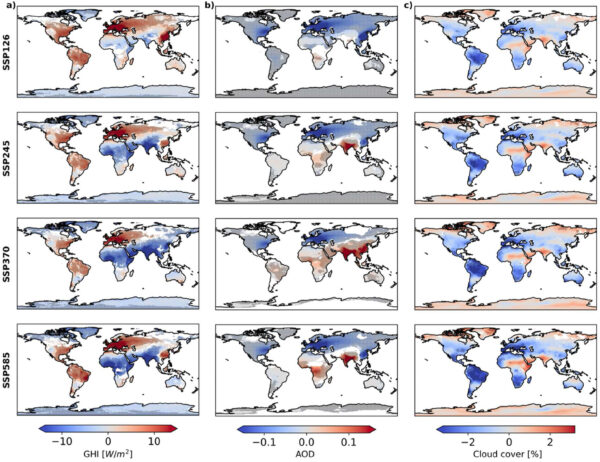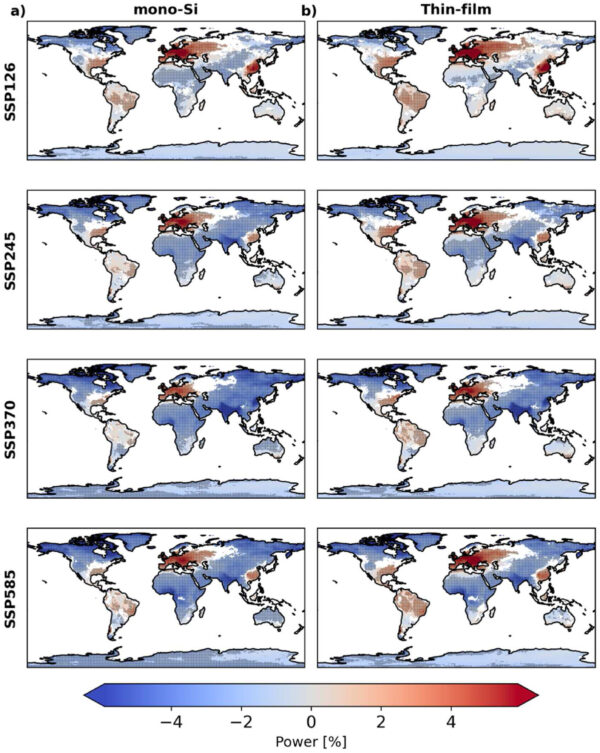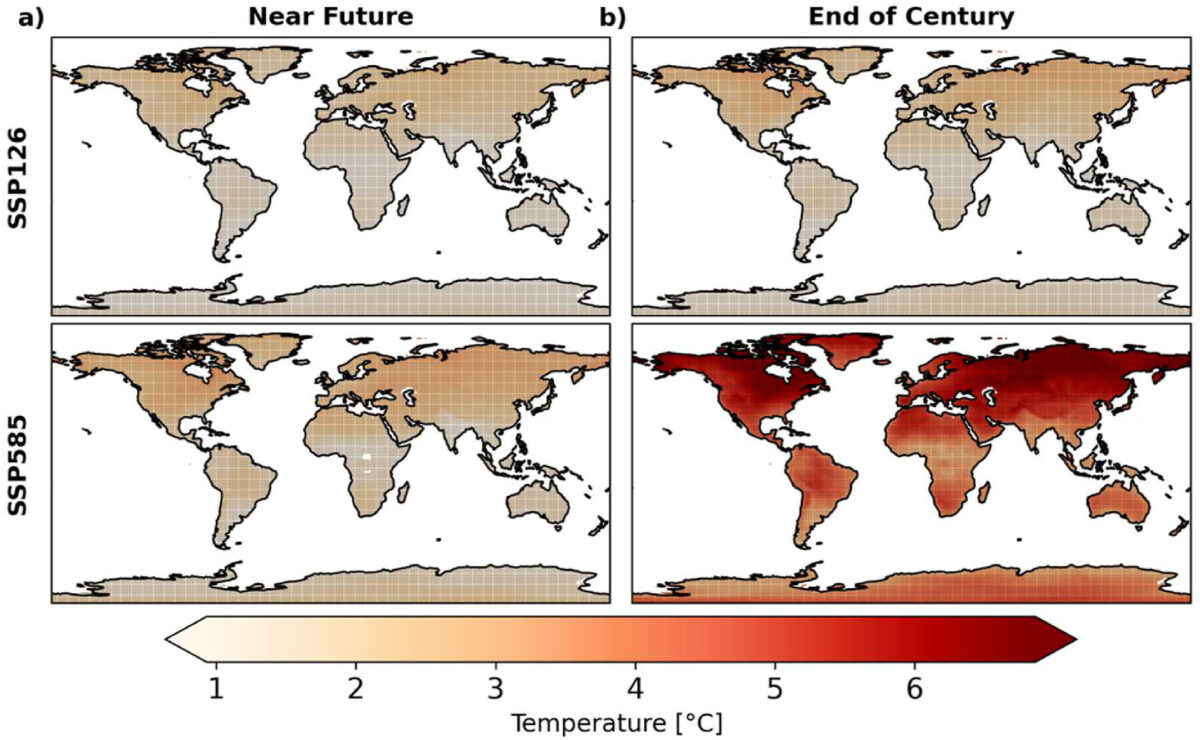‘Maximising photovoltaic potential and minimising costs in a future warmer climate: the role of atmospheric aerosols and greenhouse gas emissions’ is the title of a new study from the University of New South Wales (UNSW) School of Photovoltaic and Renewable Energy Engineering. The study maps the projected productivity of photovoltaic installations across future emissions scenarios in different world regions.
While greenhouse gasses are well known to affect climate change and global temperatures, the study also shows aerosols have several other impacts, including on global horizontal irradiance (GHI), meaning total irradiance from the sun on a horizontal surface on earth. Besides temperature, solar radiation and wind speed, the study evaluated the role of aerosols and cloud cover.
In addition to applying different emissions models over different world regions, the research also investigated the difference between mono-crystalline silicon (mono-Si) and thin-film modules to find out which would be more beneficial under different future climate scenarios. This is significant, of course, since mono-Si modules are dominant in the market but thin-film modules are more resilient to warmer climates, highlighting the importance of improving thermal management in PV modules. In Australia, for example, reductions in photovoltaic energy were shown to be significant for mono-Si but not for thin film.
The study’s models reflecting different emission-level scenarios made such differences clear across global regions. The study found that, with increasing climate change, solar resources increased in West and Central Europe, South America, and Central North America. In contrast, global horizontal irradiance (GHI) reductions were predicted in northeast Africa, the Tibetan plateau and South Asia.

Image: University of New South Wales, Renewable Energy, Creative Commons License CC BY 4.0
In future models investigated in the study, significant increases were predicted in solar resources in South America, for example. The combination of significantly higher wind speeds in this region suggests they could be more favourable for the deployment of hybrid solar wind energy projects, for example.
PhD candidate Alejandra Isaza, who led the study, said: “These results aim to contribute to the analysis of future energy storage requirements, help optimise the location of future solar plants, as well as promote the adoption of policies to accelerate the ongoing energy transition and mitigate the climate change impacts.”
While greenhouse gases are commonly correctly associated with rising temperatures, the word aerosol is something we usually associate with spray cans. But aerosol is basically a catchphrase for all airborne particulate matter, including naturally occurring, such as sea spray or volcanic ash, as well as dust and manmade air pollution from burning fossil fuels.

Image: University of New South Wales, Renewable Energy, Creative Commons License CC BY 4.0
Light-coloured aerosols, like many kinds of dust from ground-up rocks, reflect the sun’s rays back out of the atmosphere, preventing that heat from ever reaching the earth’s surface, which has a cooling effect. But aerosols, like little flecks of black carbon from burned coal or wood, do the opposite, absorbing heat from the sun. This kind of particulate matter has increased by 60% since the beginning of the industrial revolution, and temperatures have risen accordingly.
Aerosols not only affect temperature, but a particle-rich atmosphere promotes cloud formation, also affecting photovoltaic productivity. The study illustrates the way future solar resources will be most impacted not only by greenhouse gas emissions but also by ineffective regional air quality management.
The study shows that greater greenhouse emissions and aerosols have a significantly negative effect on PV productivity, and the study aims to highlight the economic and business costs of these scenarios to prompt better energy transition and climate change mitigation policies. For the PV industry, the study reveals interesting regional differences in photovoltaic productivity and the need for accurate modelling of different emissions scenarios, something the study’s authors say needs greater attention.
This content is protected by copyright and may not be reused. If you want to cooperate with us and would like to reuse some of our content, please contact: editors@pv-magazine.com.








2 comments
By submitting this form you agree to pv magazine using your data for the purposes of publishing your comment.
Your personal data will only be disclosed or otherwise transmitted to third parties for the purposes of spam filtering or if this is necessary for technical maintenance of the website. Any other transfer to third parties will not take place unless this is justified on the basis of applicable data protection regulations or if pv magazine is legally obliged to do so.
You may revoke this consent at any time with effect for the future, in which case your personal data will be deleted immediately. Otherwise, your data will be deleted if pv magazine has processed your request or the purpose of data storage is fulfilled.
Further information on data privacy can be found in our Data Protection Policy.